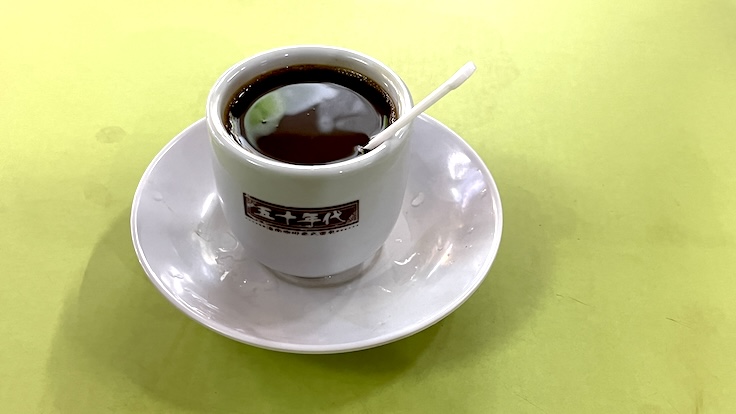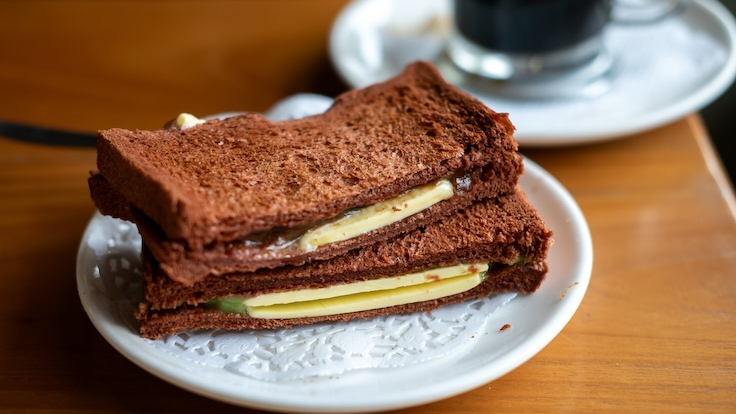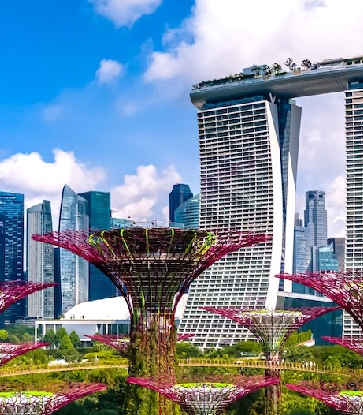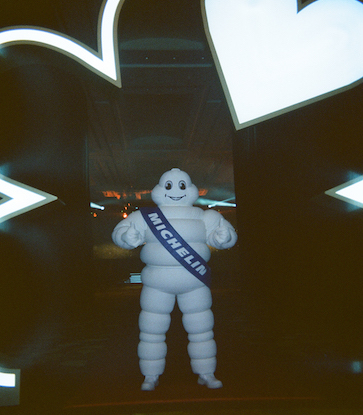Undertaken in hawker centres, kopitiams (coffee shops), or chains around the country, the Nanyang breakfast combination of kaya toast, soft-boiled eggs, and kopi (coffee) in Singapore isn’t just a traditional first meal of the day for many Singaporeans.
Understanding the historical context of this quintessential Singaporean breakfast gives one a peek into the Lion City's immigrant history during the British colonial era, as evidenced by how culturally layered Singapore cuisine is, even today.

History
From the 1800s, many Chinese immigrants from Mainland China migrated to Singapore to seek better economic opportunities, via a passage known as 下南洋 (South of the Ocean) literally moving down the "South Seas", which implies the Southeast Asia of today. The Hainanese, a dialect group from the Southernmost and smallest province in China, only arrived in the 1870s due to more conservative attitudes. This rendered them disadvantaged in terms of employment compared to earlier and bigger waves of Hokkiens, Teochews, and Cantonese immigrants.
With that, the Hainanese were then forced into the service sector, where many of them became cooks and domestic servants for rich British, European, and Peranakan (Straits Chinese) families; on ships or in hotels. After World War 2, with the reduction of the British population in Singapore, the Hainanese had to also then pivot, and they utilised their now-honed culinary skills to set up their own kopitiams. It is through these British-influenced Hainanese coffee shops where kopitiam culture and the new Singapore breakfast of toast, eggs, and coffee, were born.

The 1950s Coffee is the only local breakfast spot in the MICHELIN Guide for Singaporean kopi and kaya toast. The stall has been satisfying the steady stream of old timer regulars who come for their daily kopi fix since the 1950s. Let’s break down what you can expect.
Kopi or Coffee
Firstly, the kopi, which is the local word for coffee, has its roots in Malay culture. Nanyang style kopi traditionally involves the technique of roasting Robusta beans with sugar, margarine, and a hint of salt. While brewing, the coffee is also traditionally hand-pulled and strained through a sock. The 1950s Coffee, as its name refers, is most known for its smooth yet heady brew of kopi, with a great body and almost mocha-like flavour.

Order your kopi like a local, by customising it to your preferred choice of milk and doneness —"Kopi-C" for evaporated milk and not condensed milk (fun fact: it's called "C" because of the Carnation brand of the evaporated milk), or "Kopi-O" for black; sweetness level — "Siu Dai" for less sweet, "Kosong" for no sugar), and temperature — "Peng" for iced.
For the adventurous, you can even add a slice of butter ("Kopi Gu You") for that extra unctuous oomph. Fret not if you’re not a coffee drinker as well; you can also take your pick from "Teh" (milk tea), "Teh-O" (black tea), or a refreshing iced lemon tea.

Kaya Toast
Kaya is a local coconut jam spread made from coconut cream, sugar, and eggs. According to Singapore food historian Khir Johari, kaya originated from Malay cuisine and is part of serikaya, a broader range of egg-based coconut cream confections.
Nyonya-style or Peranakayn-style kaya is green, as it is infused with aromatic pandan leaves, while Hainanese-style kaya has a brown tint due to the addition of caramelised sugar. The 1950s Coffee serves its toast with thin white bread that's first toasted over a grill, and then sandwiched with slabs of butter and Hainanese kaya.
Ask any Singaporean and they will likely have a different answer as to where their favourite kaya toast spot is. However, one could argue that having well-toasted bread (especially if using the traditional charcoal toasting method for a smoky char), thicker slabs of quality butter, and just the right kaya-to-butter-ratio would all contribute to the quality of a winning, decadent kaya toast.

Eggs
Finally, to complete this holy trinity of breakfast components would be the soft-boiled eggs. With the ideal texture of tender whites and runny yolks, the eggs also come with DIY table-side condiments of white pepper and dark soya sauce for a peppery, sweet, and salty kick.
No Nanyang breakfast ritual is complete without getting your hands slightly sticky after cracking the eggs open yourself, using your teaspoon to swirl the dark sauce and yolks all over into a tapestry of ugly-delicious, slurping up the gooey eggs directly from the dish, and then dipping your crispy kaya toast into them for a cacophony of flavours and textures.

It would also be misleading to not point out that, while traditionally known as a breakfast, there is no stopping anyone from enjoying this set during tea time or even as a post-lunch snack. Many local office workers "dapao" (takeaway) a toast and kopi after lunch, as a pick me up before heading back to work.
As one savours this affordable everyday Singapore breakfast in hawker stalls like The 1950s Coffee — one of the bastions of old Singapore — one should pay homage to how this quintessential meal is not just merely about coffee, eggs, and toast. It is also a story of immigration, resilience, and cultural interactions amongst Singapore’s ethnically diverse population.
(Photo: Bao Lin Ching)
Through the centuries, Singapore has adapted, invented, and welcomed new foreign influences while still holding on to her traditions as an island-nation and embracing progressiveness as a global city. Stories of the past may be hidden within plain sight, but certainly not forgotten as evidenced through the Lion City's living culinary heritage.






















